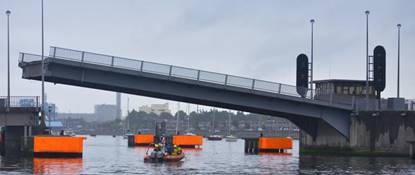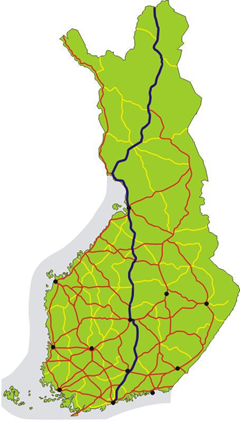A Review of Handback Experience with Public Private Partnerships
Presenters:
Qingbin Cui (University of Maryland)
Marcel Ham (IMG Rebel)
This study was intended to address the gap in knowledge regarding handback
- There is a gap in knowledge and experience globally regarding handback procedures in P3 projects
- In the U.S., no P3 highway projects have reached the end of their contract term
- Internationally, only few P3 projects have reached handback
- Limited guidance exists on handback in P3s
- Several countries and international organizations have created guidance documents, but they provide limited detail
- The World Bank acknowledges the limited practical experience and guidance in handback requirements
Presenters

Marcel Ham
Principal
IMG Rebel

Qingbin Cui
Associate Professor
University of Maryland
Overview of Presentation
- Analytical Framework
- Case Studies
- Key Takeaways
- Recommendations for good practice
Analytical Framework
A review of existing knowledge identified several critical elements of the P3 handback process
- Handback requirements
- Most guidance documents recognize the importance of defining handback requirements within the contract
- However, specific recommendations are lacking
- Monitoring/inspection procedures
- Clearly defining monitoring and inspection procedures is critical to project handback
- Most guidance, however, does not provide specifics related to the timing and focus of inspections
- Financial incentives/securities
- Financial incentives and security related to the handback process is critical
- Limited guidance was found in the reviewed documents
A successful handback is based on both the outcome and the process
- A successful handback outcome involves:
- The asset was returned meeting or exceeding requirements set forth in the P3 agreement at no additional cost to the contracting agency.
- Or, where handback requirements were not defined, more subjective criteria:
- The asset was returned in equal or better condition as compared to an asset of similar nature, age, and geographical location
- The authority was not required to make capital expenditures on repairs or upgrades to ensure working condition of the asset going forward.
- A successful handback process involves:
- Handback procedures were implemented as defined in the P3 agreement including following procedures for inspection, handover, financial guarantees, and warranty provisions.
- Or, where the process was not defined, more subjective criteria:
- The process resulted in no additional transaction costs to the agency, related to delays, inspections, litigation
- The returned asset was made available for use throughout the handback process without limiting service or performance
- The handback process avoided conflict between public agency and concessionaire, and resulted in no litigation or need for mediation
Questions?
Case Studies
East-Link Bridge, Dublin, Ireland

Photo credit:: https://commons.wikimedia.org/wiki/File:East_Link_Bridge_in_Dublin_lifting_for_a_ship.jpg
- One of Ireland's first P3 projects
- DBFOM contract with National Toll Roads (NTR), an Irish limited company
- The P3 contract expired in December 2015
- On January 1, 2016, tolling and maintenance was transferred to Ringsend Toll Bridge (RTB), wholly owned by Dublin City Council (DCC)
- The original concession agreement had no handback requirements
- The main challenge was the transfer of employees and staff
- Handback process was smooth and operability was not impacted
- The success of the handback is attributed to the close relationship between Eastlink (the SPV) and DCC
Highway 4 (VT4 Järvenpää-Lahti) - Finland

Photo credit: https://upload.wikimedia.org/wikipedia/commons/thumb/f/f5/Finland_national_road_4.png/290px-Finland_national_road_4.png
- First DBFOM roadway project in Finland
- The agreement between the Finnish Transport Agency (FTA) and the SPV (Tieyhtiö Nelostie Oy) was signed in March 1997
- Handover occurred at midnight on August 30, 2012, and was considered an overall success
- The facility had to be in the same condition as any other 15-year old motorway in Finland, fulfill contract requirements, and specific handback criteria
- The handback process involved a 3-year timeline, FTA inspections, and routine joint meetings
- The SPV provided a 2-year warranty period to ensure there were no extraordinary costs to the public agency
- The FTA recommended that Highway 4 P3 serve as a guideline for future P3 handbacks
M4 Motorway - New South Wales, Australia

Photo credit: https://pbs.twimg.com/media/CtgkVmVWEAAqB9b.jpg
- One of the first P3s in NSW, and the first Australian road concession to reach handback
- Handback occurred at midnight on February 15, 2010
- The handback process began in 2008 when a governance structure was established
- The project agreement did not include specific handback provisions, nor did it specify how to determine if the roadway was in "satisfactory condition"
- The handback process was ad-hoc, but considered successful
- The relationship and goodwill between the parties was a key driver of success
- However, the Auditor General of NSW recommended that future P3s include inspection and testing provisions for handback in the P3 contract
Despite lack of handback requirements, handbacks were successful in all three cases
| Project |
East-Link Bridge |
Highway 4 |
M4 Tollway |
Clear handback
requirements in P3 Agreement: |
No |
Yes |
No |
| Handback Outcome Met Criteria for Success |
Yes - bridge was returned in satisfactory condition at no additional cost to the City of Dublin. |
Yes - highway met all criteria at no additional cost to the Finnish Transport Agency. |
Yes - The tollway met conditions of a similar asset. The only added capex was to repair a pre-concession bridge
defect. |
Clear handback
procedures in P3 Agreement: |
No |
Yes |
No |
| Handback Process Met Criteria for Success |
Yes - no conflict, cost, or performance impact. |
Yes - process followed handback timeline and requirements |
Yes - The process was free from conflict, material cost, or performance
impact. |
Questions?
Key Takeaways
- Project representatives indicated that they could have benefited from more specific contractual guidance on handback
- Vague requirements, such as a requirement that the asset be returned in "satisfactory condition," can lead to conflicting interpretations
- Clear procedures and a (joint) inspection process are critical success factors
- Successful handback processes clearly define the roles and responsibilities of the inspection procedure
- Includes establishing the timing of inspections, benchmarks for asset quality, and procedures for incorporating inspection findings into maintenance plans
- Inspections should be conducted jointly to ensure a transparent and common understanding of results
- Financial incentives and protection are beneficial
- Financial incentives limit perverse and unintended behavior
- Maintenance reserves, letters of credit, or surety bonds can protect the public agency
- Flexibility regarding handback requirements is required
- Due to a changing environment, technical requirements and contract provisions tend to be incomplete
- Flexible contract provisions, effective organizational structures, and collaborative efforts can lead to satisfactory processes
- Short contracts reduce challenges
- Limited need to change handback requirements
- Needs to be balanced with life cycle optimization considerations
- A collaborative approach is beneficial
- A strong relationship between the concessionaire and public agency enhances handback success, even in the absence of detailed requirements and procedures
- International P3 contracts tend to be less legalistic and focus more on collaboration than U.S. P3 contracts
- Workforce transition upon handback can be complicated
- A successful handback secures continuity in operations by integrating existing employees into the new operator's workforce
- Transfer of staff involves significant complexity and creates uncertainty for both the public agency and the concessionaire
Questions?
Recommendations for Good Practice
Handback procedures and requirements should be clearly defined, but flexible
- Detailed maintenance and inspection requirements help ensure the concessionaire is maintaining the asset to an acceptable level of performance
- A clear handback process includes detail on when it should begin, roles, and responsibilities
- Clear responsibilities will ensure handback occurs according to schedule and without conflict
- This has been incorporated into more recent P3 contracts
- Procedures and requirements should retain flexibility, however
- Requirements should be defined in functional, output-based terms rather than prescriptive, input-based terms
- Agreements should allow for changes to the requirements
Life-cycle maintenance plans have many benefits for handback, too
- A life-cycle maintenance plan defines requirements and inspection procedures throughout the P3 agreement
- It ensures the agency and concessionaire are aware of the asset condition and can mitigate issues in advance of handback
- The inspections take place jointly, to ensure both parties are in agreement with findings and understand financial implications
- It minimizes the financial risk from unexpected repairs at handback
Financial protection for the agency is critical
- Protection is required should the asset be returned to the public agency in an unacceptable form or require extraordinary maintenance following handback
- This is complicated, as the SPV may dissolve after the concession matures and no longer has capital
- Protection can include a Handback Reserve Account, surety bonds, or letters of credit that extend beyond maturity of the contract
- Most recent P3 projects include some form of Escrow or Handback Reserve Account, and specific requirements regarding its sizing
Questions?
Contact information
Website: https://www.fhwa.dot.gov/ipd/p3/
Patrick DeCorla-Souza
P3 Program Manager
FHWA Center for Innovative Finance Support
Patrick.DeCorla-Souza@dot.gov
Mark Sullivan
P3 Program Director
FHWA Center for Innovative Finance Support
Mark.Sullivan@dot.gov




